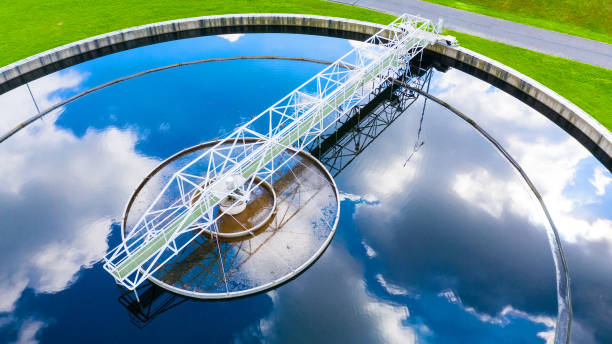In an era where environmental consciousness is rapidly gaining ground, the concept of closed-loop wastewater recycling systems is emerging as a game-changer. These systems not only align with the global push towards sustainability but also offer practical solutions for industries and communities seeking to minimize their ecological footprint. In this blog, we’ll delve into what closed-loop wastewater recycling systems are, why they matter, and how their installation can revolutionize waste management practices.
What is a Closed-Loop Wastewater Recycling System?
A closed-loop wastewater recycling system is an advanced treatment process designed to reuse wastewater within the same facility or community. Unlike traditional wastewater management systems, which often discharge treated water into natural bodies of water or sewer systems, closed-loop systems aim to recycle and reintroduce the treated water into the original process. This approach significantly reduces the volume of water needed from external sources and minimizes environmental impact.
The Importance of Closed-Loop System

Resource Conservation: Water is a finite resource, and its scarcity is a growing concern worldwide. Closed-loop systems help conserve water by recycling it, reducing the need for fresh water intake and minimizing the stress on local water supplies.
Cost Efficiency: By recycling wastewater, facilities can lower their water and sewerage costs. This is particularly beneficial for industries with high water consumption, such as manufacturing and agriculture.
Environmental Impact: Reducing wastewater discharge lowers the risk of pollution and contamination of local water bodies. Closed-loop systems contribute to a cleaner environment by minimizing the ecological footprint of wastewater.
Regulatory Compliance: As environmental regulations become more stringent, closed-loop systems offer a way to meet compliance standards and avoid potential fines or penalties related to wastewater management.
Components of a Closed-Loop Wastewater Recycling System
A closed-loop system consists of several key components, each playing a crucial role in ensuring effective recycling and reuse of wastewater:
Pre-Treatment: This stage involves the initial filtering of wastewater to remove large particles and contaminants. Techniques such as screening, sedimentation, and flotation are used to prepare the water for more advanced treatment.
Primary Treatment: During primary treatment, the wastewater undergoes physical processes to remove suspended solids and organic matter. This often involves sedimentation tanks and clarifiers.
Secondary Treatment: This stage focuses on biological treatment, where microorganisms break down organic matter that was not removed during primary treatment. Processes such as activated sludge, trickling filters, or moving bed biofilm reactors are commonly used.
Tertiary Treatment: Tertiary treatment involves advanced processes to further purify the water. Techniques like filtration, reverse osmosis, and disinfection (using UV light or chemicals) are employed to ensure that the recycled water meets high-quality standards.
Recycling and Reuse: Once treated, the water is either reused within the same process or repurposed for other applications, such as irrigation, cooling, or even potable uses, depending on the level of treatment achieved.
Steps to Installing a Closed-Loop Wastewater Recycling System
Implementing a closed-loop wastewater recycling system involves careful planning and execution. Here’s a step-by-step guide to navigating the installation process:
Feasibility Study: Begin with a feasibility study to assess the suitability of a closed-loop system for your facility or community. This includes evaluating water usage patterns, wastewater characteristics, and potential benefits.
Design and Planning: Engage with engineering and environmental experts to design a system tailored to your specific needs. This phase includes selecting appropriate treatment technologies, determining the required infrastructure, and planning for integration with existing systems.
Permits and Regulations: Obtain the necessary permits and ensure compliance with local, state, and federal regulations. This step is crucial to avoid legal complications and ensure that the system meets all environmental standards.
Procurement and Construction: Source the required materials and equipment for the system. Construction involves installing treatment units, pipelines, storage tanks, and control systems.
Testing and Commissioning: Once construction is complete, conduct rigorous testing to ensure the system operates efficiently and meets performance standards. Address any issues before the system becomes fully operational.
Training and Maintenance: Train staff on the operation and maintenance of the system. Regular maintenance and monitoring are essential to ensure long-term efficiency and reliability.
Case Studies: Success Stories in Closed-Loop Wastewater Recycling
The Coca-Cola Company: Coca-Cola has implemented closed-loop systems in several of its bottling plants worldwide. These systems have significantly reduced water consumption and wastewater generation, showcasing the potential for large-scale industrial applications.
Singapore’s NEWater Project: Singapore’s NEWater project is a groundbreaking example of urban water recycling. The project treats and reuses wastewater, contributing to the city-state’s water security and demonstrating the viability of closed-loop systems in densely populated areas.
NASA’s Space Missions: NASA has developed closed-loop systems for space missions to recycle wastewater on spacecraft. This technology is a testament to the feasibility and importance of closed-loop systems in extreme environments.
Challenges and Considerations
While closed-loop wastewater recycling systems offer numerous benefits, they also come with challenges:
Initial Costs: The capital investment required for installing a closed-loop system can be significant. However, the long-term savings on water and wastewater treatment can offset these initial costs.
Complexity: These systems are technologically advanced and may require specialized knowledge for operation and maintenance. Ensuring proper training and support is essential.
Regulatory Hurdles: Navigating the regulatory landscape can be complex, especially in regions with stringent environmental regulations. Early consultation with regulatory bodies can help streamline the approval process.
Public Perception: In some cases, there may be resistance or skepticism regarding the use of recycled water. Public education and transparency about the safety and benefits of closed-loop systems are crucial for gaining acceptance.
The Future of Closed-Loop Wastewater Recycling
The future of closed-loop wastewater recycling systems looks promising as technology continues to advance. Innovations in treatment processes, such as more efficient filtration and energy recovery techniques, are expected to enhance the performance and affordability of these systems. Additionally, the growing emphasis on sustainability and circular economy principles will likely drive broader adoption across various sectors.
As we move towards a more sustainable future, closed-loop wastewater recycling systems stand out as a critical solution for managing water resources effectively. By embracing this technology, industries, municipalities, and individuals can contribute to a greener planet and set an example for responsible water use.
In conclusion, closed-loop wastewater recycling systems represent a vital step towards sustainable water management. Their installation, while complex, offers significant environmental and economic benefits. As awareness and technology evolve, these systems will play an increasingly crucial role in addressing the global water crisis and promoting a more sustainable future.
Related Posts
- Septic Tank Inspections: Why They’re Crucial for Homebuyers
- Do Domestic Sewage Treatment Plants Smell?
- How Often Do Septic Tanks Need To Be Replaced?
- How does Wastewater and Greywater differ?
- How Can We Reduce Wastewater At Home?
- Below-Ground Septic Tanks: Sydney’s Septic Solutions
- Is Wastewater Treatment sustainable?
- What Are The Sources Of Wastewater?




